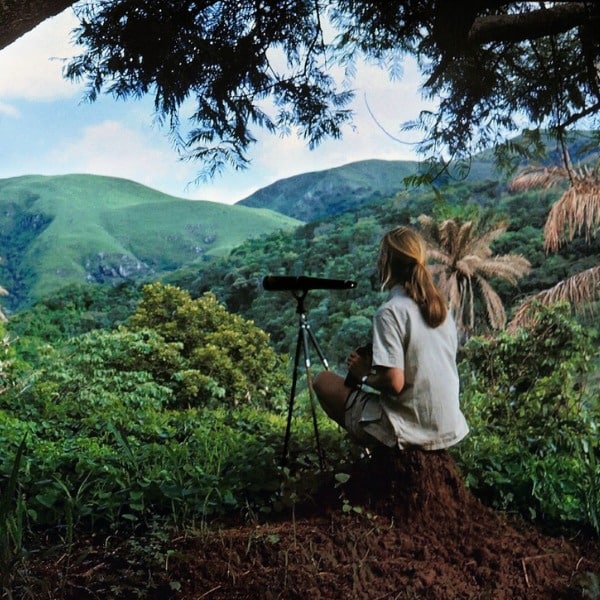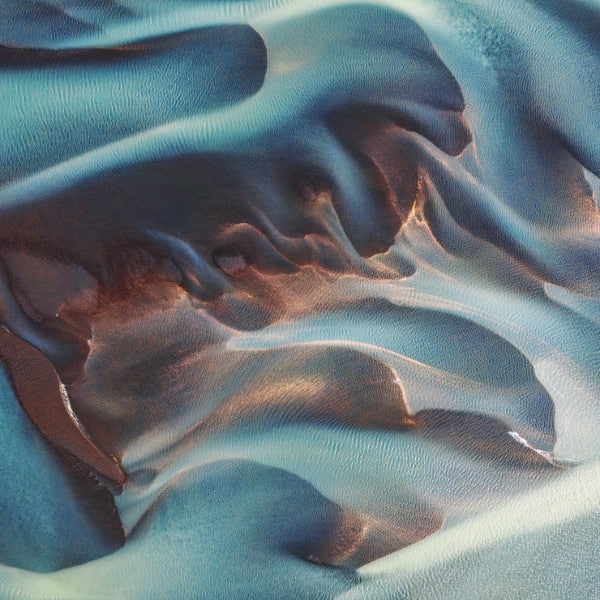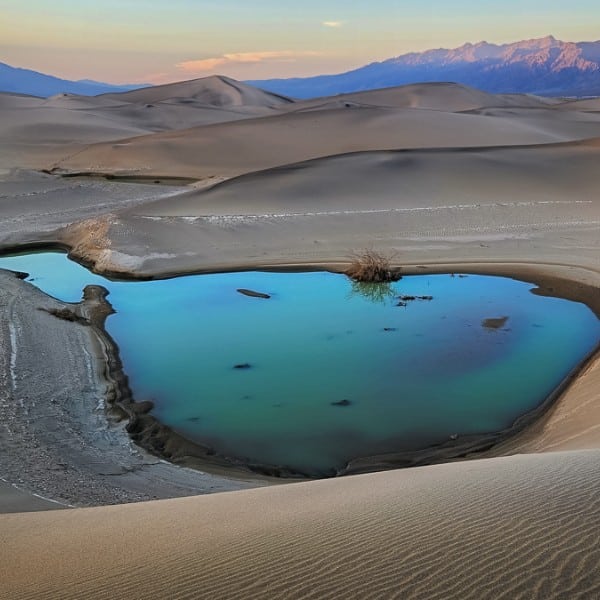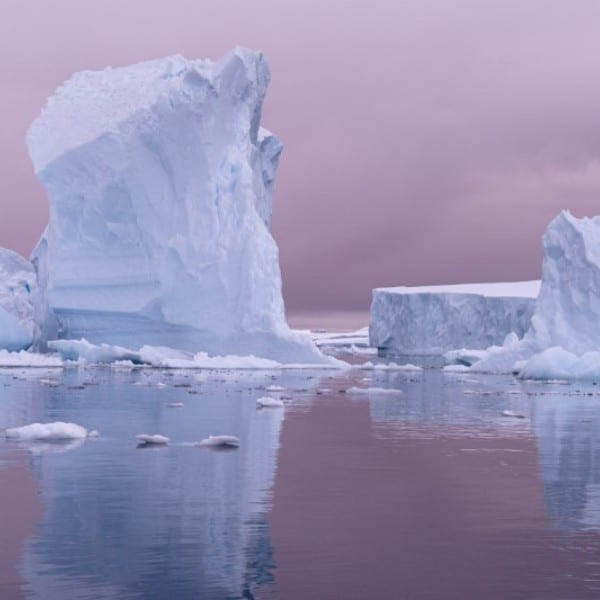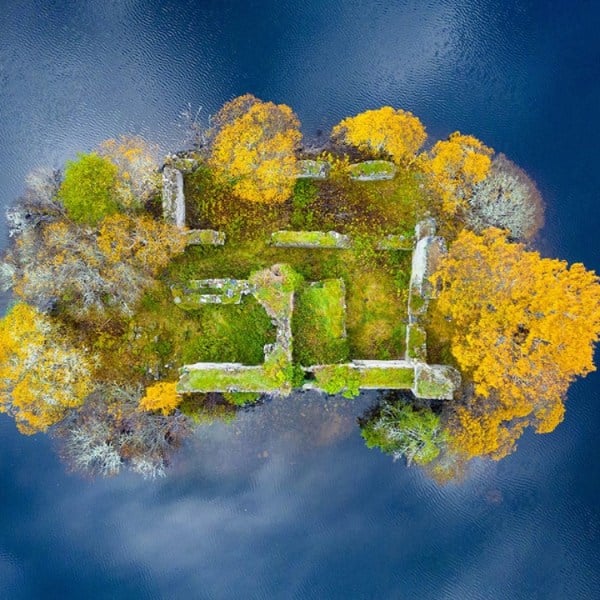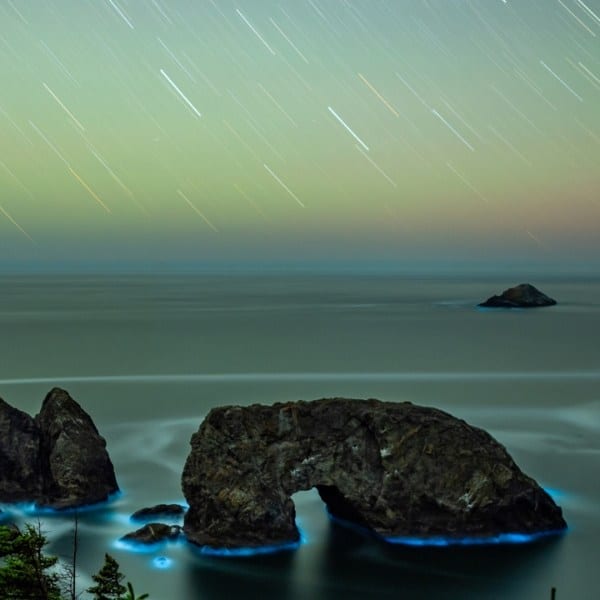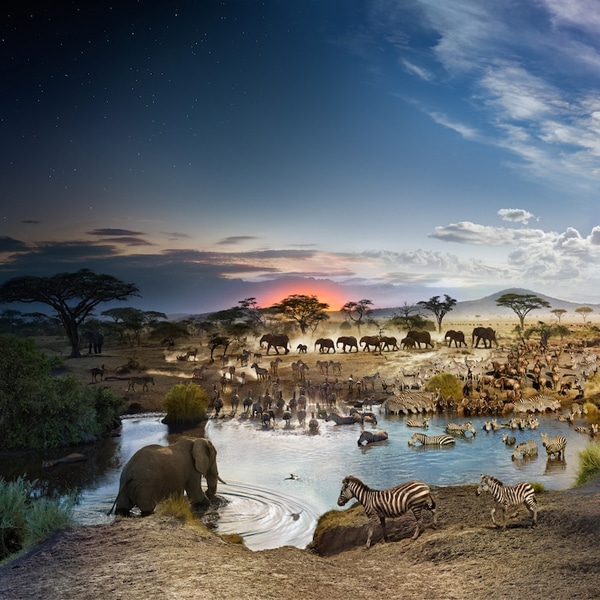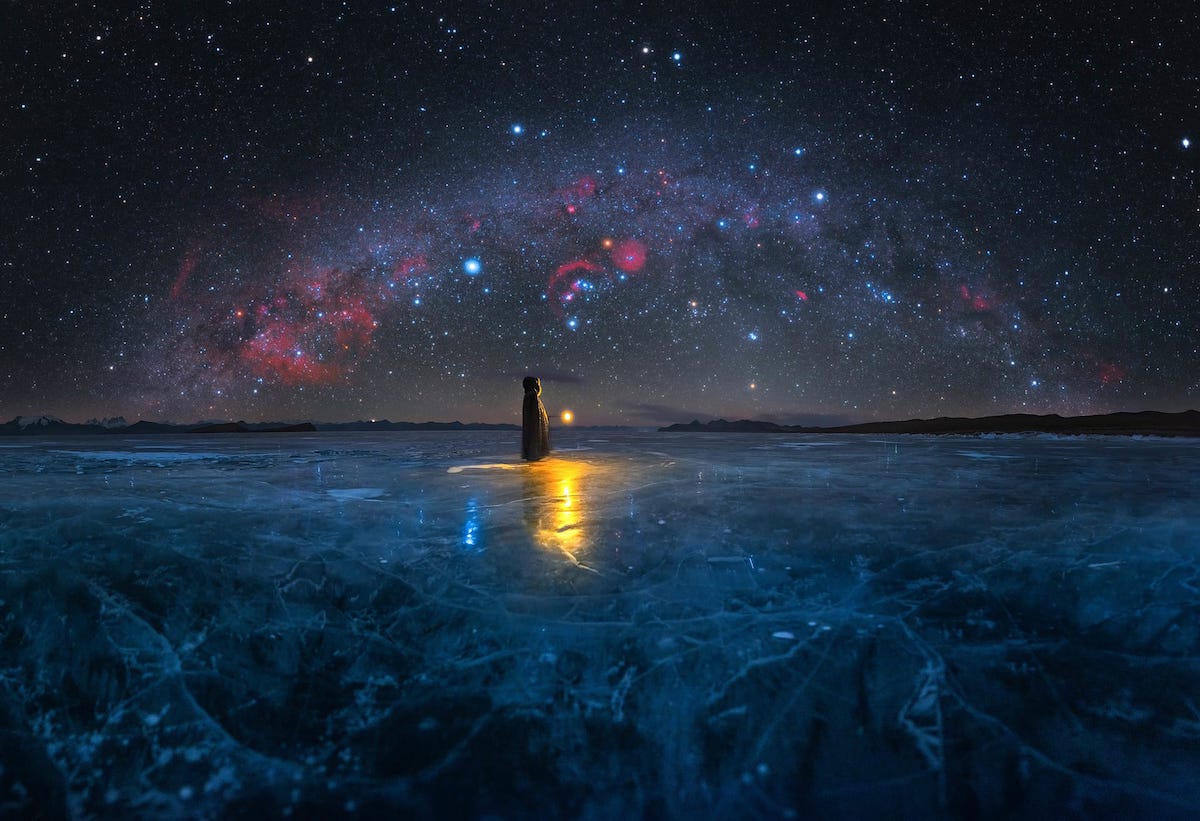
“Ice Age” by Alvin Wu. Location: Tibet
“This is a blue ice lake, Pumoungcuo, at an altitude of 5.070 meters (16,600 feet).
This lake, located in Tibet, freezes every winter. At night, under the low temperatures of minus 20 °C (-4 °F), you can listen to the sound of the ice cracking while capturing the most beautiful winter sky. The blue ice surface and dazzling Orion constellation create a fantasy landscape. I felt so happy to have the stars as my companion on this magical night.”
The Milky Way has long been a source of fascination for scientists and astronomy lovers alike. And while researchers are busy imaging black holes in our galaxy, there are many astrophotographers who also focus their attention on the Milky Way. From Tibet to Utah to New Zealand and Chile, there are so many spectacular locations to view our galaxy. Luckily, Capture the Atlas is back with its annual roundup of the best Milky Way Photographers of the Year to show off just how amazing it is to see the galaxy from Earth.
Whether high up in the Alps or in a remote part of the desert, all of the photographers went to great lengths to get their Milky Way images. New Zealand, known for its incredible landscape, was a popular destination, as was Spain's Canary Islands. Both provide the clear sky and expansive environment needed to get a picture of the Milky Way that does the galaxy justice.
Of particular note is Uroš Fink‘s photograph, which was taken in Slovenia's Mangart Saddle. Located in the Julian Alps, it was the perfect place for the photographer to not only capture the Milky Way, but also the Perseid meteor shower. The result is an image where falling stars dance around the arcing bow of the Milky Way. Another standout is Alvin Wu‘s magical photo of the galaxy shining brightly over a frozen lake in Tibet. The fuchsia hues of the Milky Way contrast beautifully with the icy lake.
See more of our favorite Milky Way photographs from this year's roundup below. The full gallery of winners can be found on Capture the Atlas.
Check out the best Milky Way photographers of 2022.
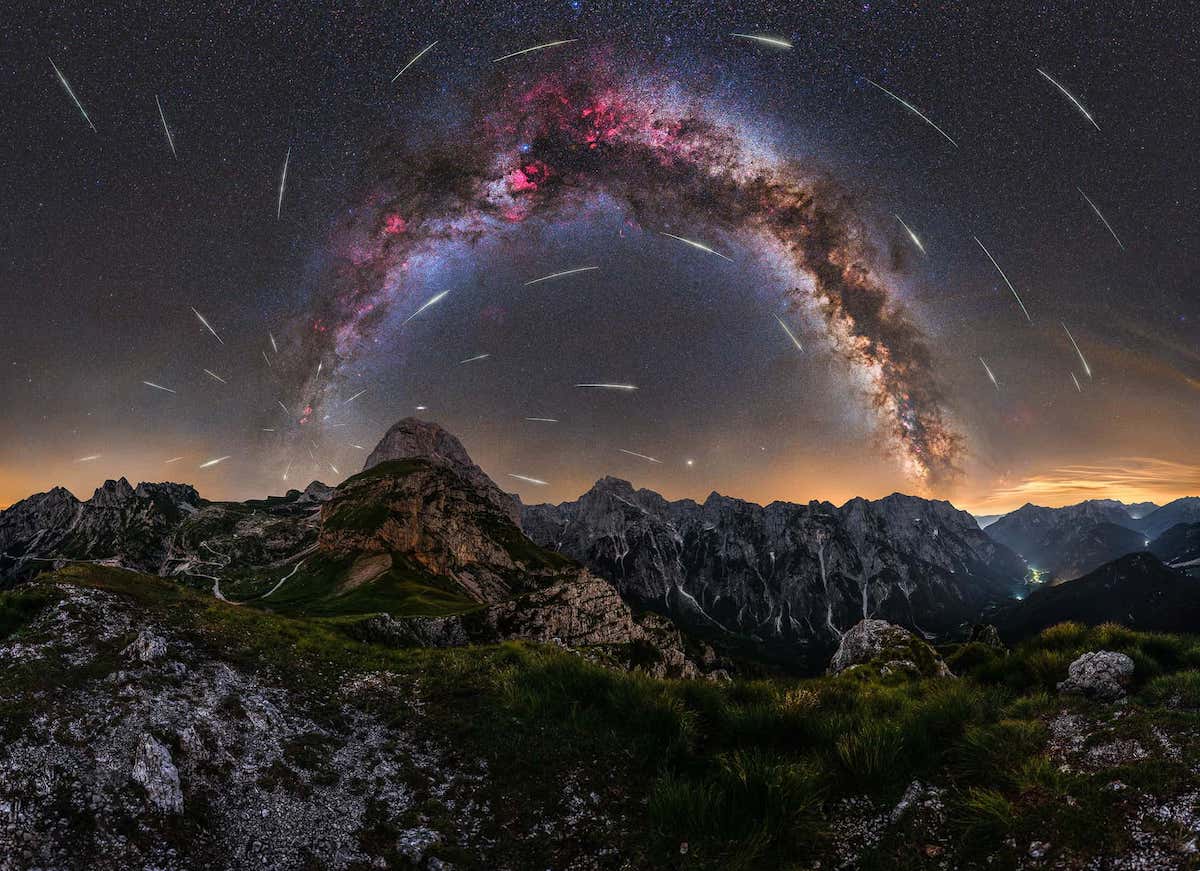
“Perseid meteor shower on Mangart saddle” by Uroš Fink. Location: Julian Alps, Slovenia
“I love nature and being somewhere outside under a starry sky in serene silence. That’s when I feel free, but, at the same time, so small.
What always excites me about photographing the night sky is that you never know what to expect; surprises are happening all over the sky. You just need to be in the right place at the right time. In the end, the experience never disappoints me in any way.
This was one of my most anticipated locations in 2021 that my friend and I planned for 6 months in advance. Of course, that brought us great results. The weather was great at first, but as the night progressed, high clouds appeared, which, unfortunately, obscured what was happening in the sky. However, I caught a few meteors, which brightened up the night. What surprised me while shooting is that, on this night, Mangart Saddle was full of light from all sides and photographers eager for unforgettable moments and photographs.
On the left side of the image is the road that leads to Mangart Saddle. An idyllic location in the middle of the Saddle is the Mangart hut, where you can sleep and eat local cuisine. The highest peak in this part of the Julian Alps is Mangart (2,679 meters), the third highest mountain in Slovenia above which the Andromeda Galaxy emits its light. Slightly to the right of it are Jalovec Mountain and the Loška walls, which rise above the Alpine valley of Loška Koritnica. it was an unforgettable night spent in the great company of friends.”
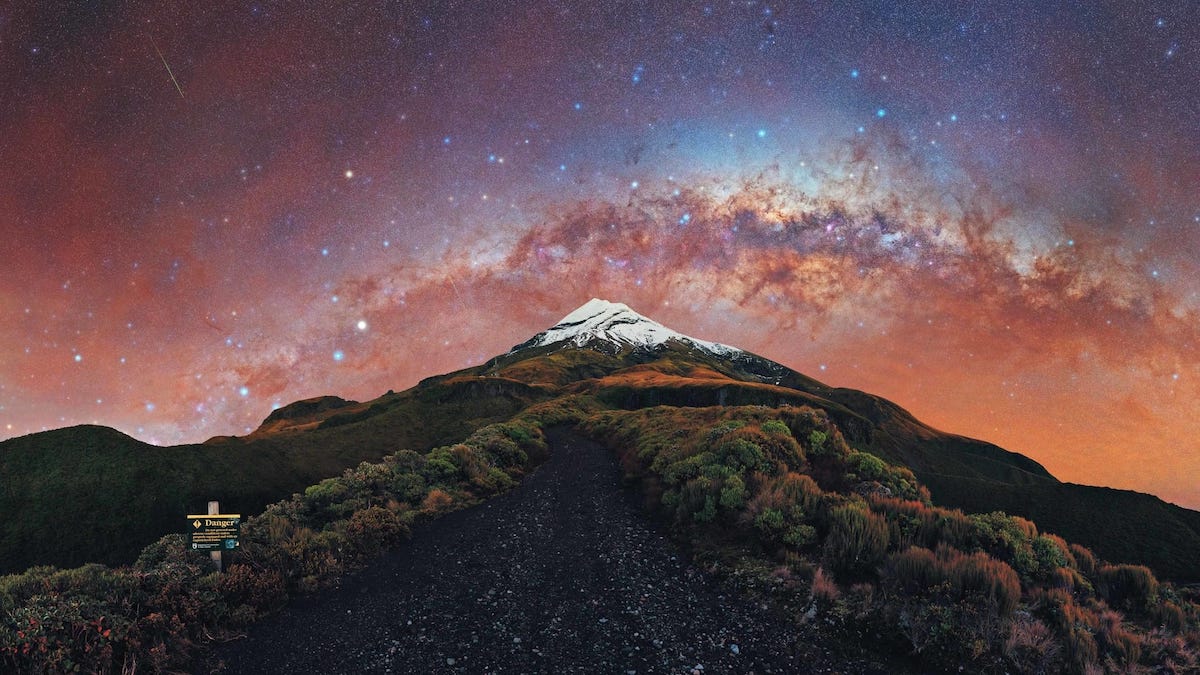
“Galactic Kiwi” by Evan McKay. Location: Mount Taranaki, New Zealand
“Mount Taranaki under the arch of the setting Milky Way. I had shot at this location before but felt I could do better, so I returned on an unexpected trip to give it another go.
I was pleasantly surprised to find the skies had cleared up by the morning and proceeded to hike up and shoot from this spot on The Puffer. While it’s not a perfect alignment with the Milky Way, it was still my first setting arch of the year. There were even a few meteors flying around and I caught some of them on my frames. I arrived a bit late, so the foreground shots ended up being taken during twilight, which required plenty of color, temperature, and exposure adjustments to merge them into a panorama.”
Astrophotographers traveled around the world to take these incredible images of our galaxy.
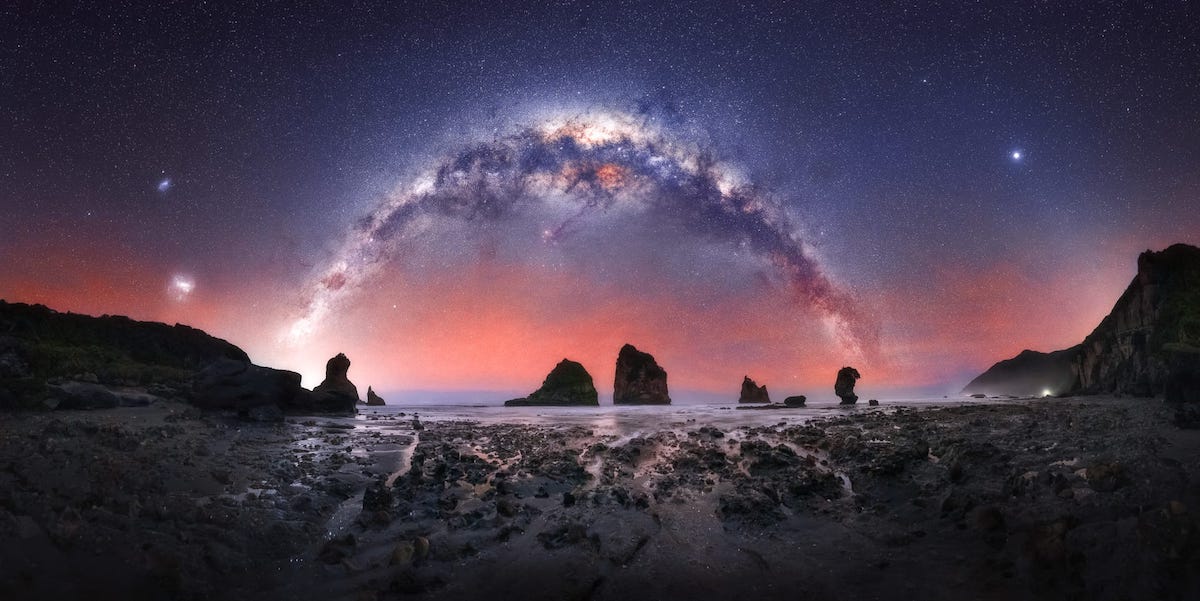
“The Rocks” by Rachel Roberts. Location: Motukiekie, New Zealand
“Some of the darkest and most underrated skies in New Zealand are along the West Coast of the South Island, a place I am so fortunate to call home.
Motukiekie, situated along The Great Coast Road, is a truly unique area where our southern Milky Way’s galactic core sets over the ancient sea stacks and exposed reefs.
While not the composition I was hoping to shoot this night, due to a big swell hindering any chance of getting out onto the main reef, I’m still incredibly happy with what I came away with and really quite proud of the fact I was out shooting at all, as I had just had a baby 6 weeks earlier. The sleep deprivation I was feeling was next level!”
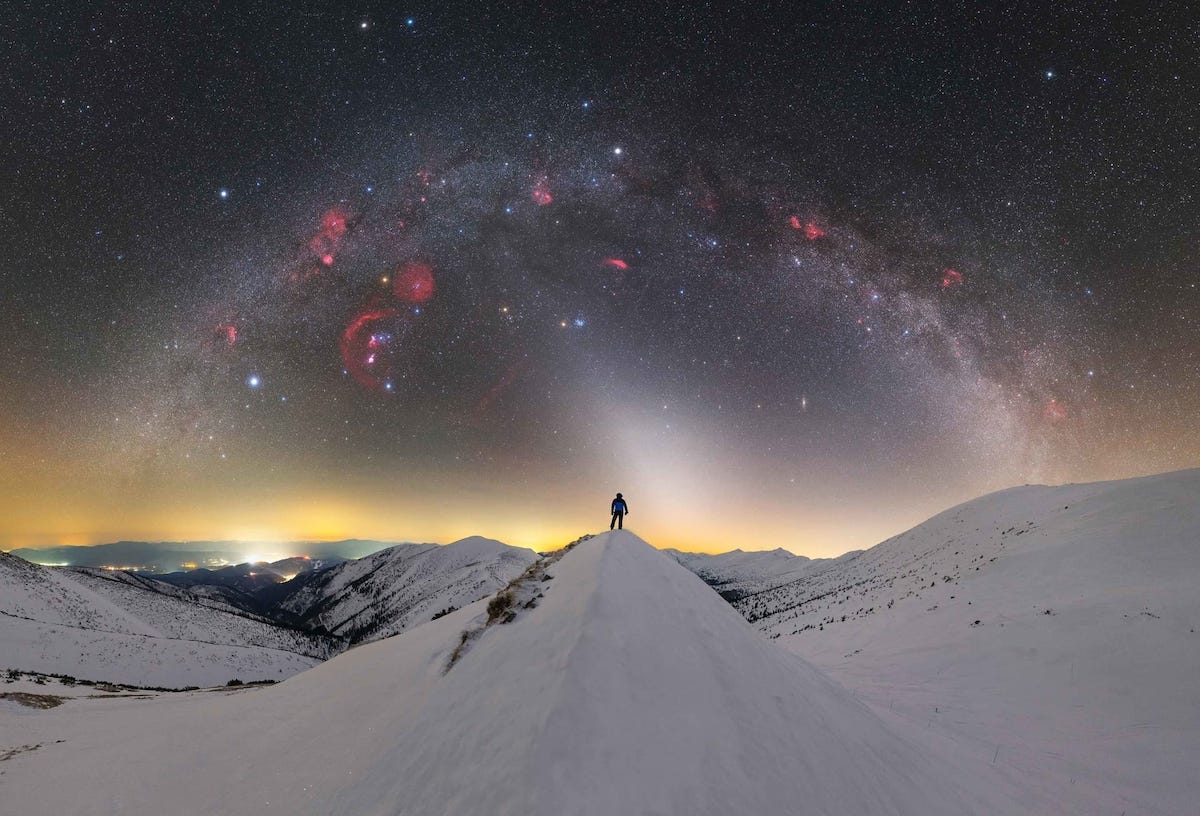
“Winter sky over the mountains” by Tomáš Slovinský. Location: Low Tatras, Slovakia
“Although the winter portion of the Milky Way is much weaker than the summer portion, it’s still full of beautiful features that also deserve attention. This part of the Galaxy contains many bright stars, particularly those of the Winter Hexagon asterism.
Galactic arms are full of hydrogen-alpha nebulae: objects that are (almost always) invisible to the naked eye, but totally visible with an astro-modified camera. To capture more details of the H-alpha emission, I also used a special Hα filter.
The arc of our Galaxy is stretching above the Low Tatras mountains in Slovakia, where the temperatures dropped below -14°C that night. Over the subject (me), there’s a bright cone of zodiacal light pointing to a nice conjunction at the time: the Red Planet, Mars, just between two open star clusters, the Pleiades and Hyades.”
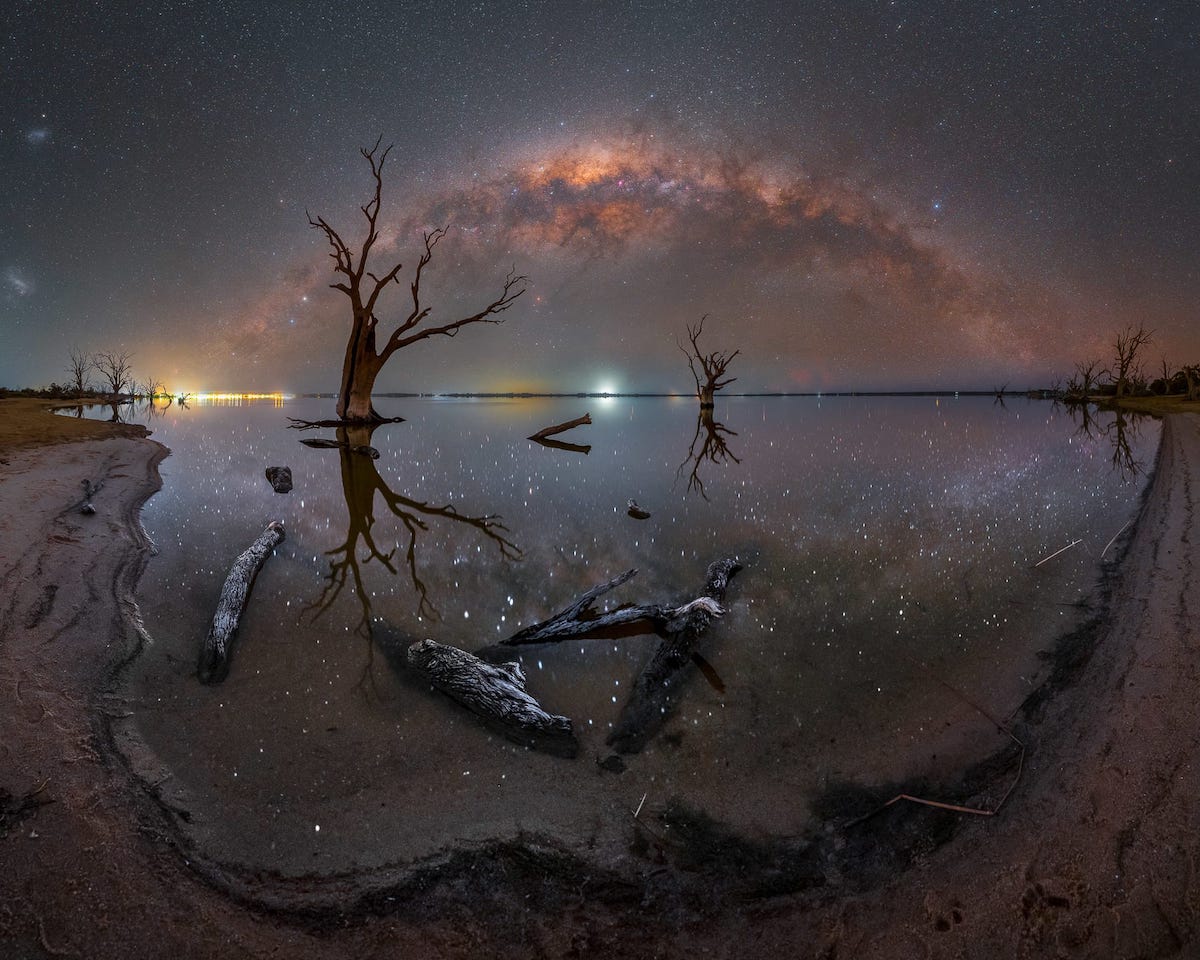
“Nookampa Reflections” by Will Godward. Location: Lake Bonney, South Australia
“The Milky Way Galaxy stretching over the famous Lake Bonney, South Australia. Also known by its aboriginal name of Nookampa.
I’ve been wanting to capture the Milky Way Arch setting over Lake Bonney for a long time and have finally been able to cross off that bucket list shot. The perfect night and conditions made this possible. I did the wise thing and pre-scouted the location during the day. This made it so much easier to head back to the same spot after midnight. Lake Bonney is home to some of the darkest skies in the world. This image has amazing reflections of the stars in the still waters and I love how the Milky Way can be seen. The dead trees of the past create so much depth in the image.”
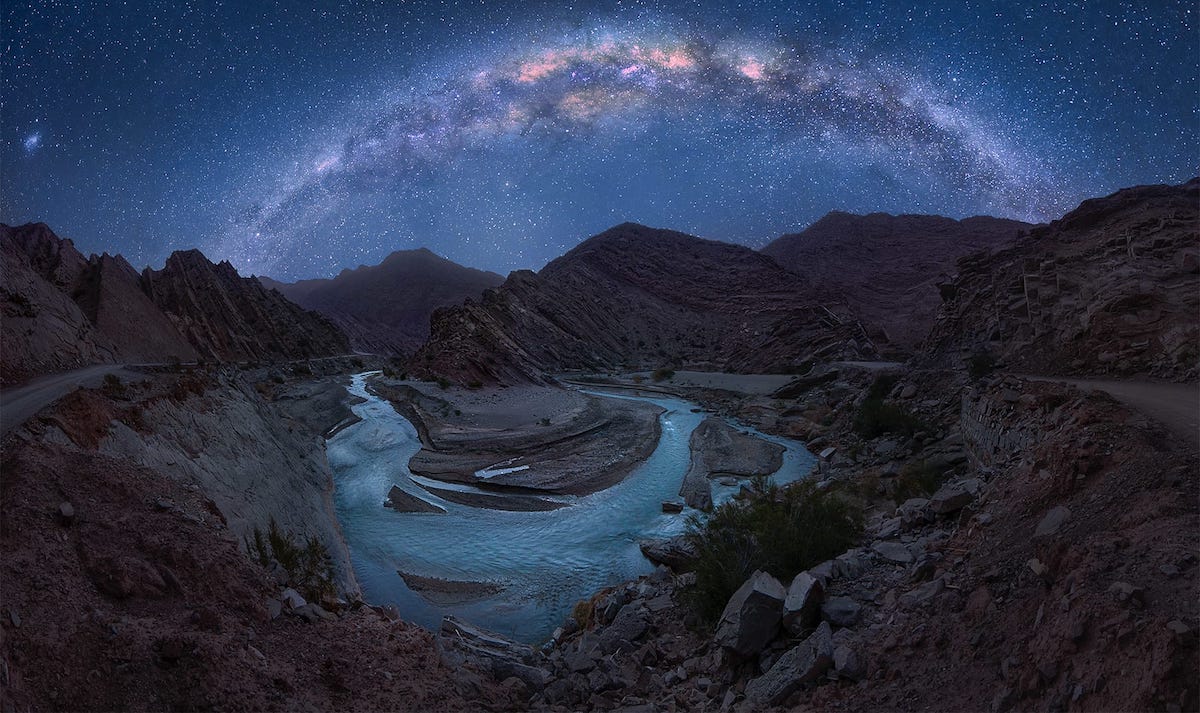
“Vinchina blue nights” by Gonzalo Javier Santile. Location: La Rioja, Argentina
“When I captured this photo, I was staying in the little Argentinian town of Vinchina. I stayed there for 5 days so I could have enough time to explore this natural wonder.
The area known as the “Pyramid” (where this photo was taken) is located just before the climb up a 4,600-meter-high mountain to reach Laguna Brava, where there are geysers and a lagoon full of pink flamingos that arrive during the season year after year. The most spectacular landmark here is the “Corona del Inca” crater, which people sometimes need oxygen to climb.
I tried the first night and it was frustrating because the location had zero light pollution, so the photo came out extremely dark, even at ISO 6400. I came back the next day at sunset, and during the blue hour, I took a photo of the foreground. Then, I waited for the Milky Way in the same tripod position and took the photo of the sky.”
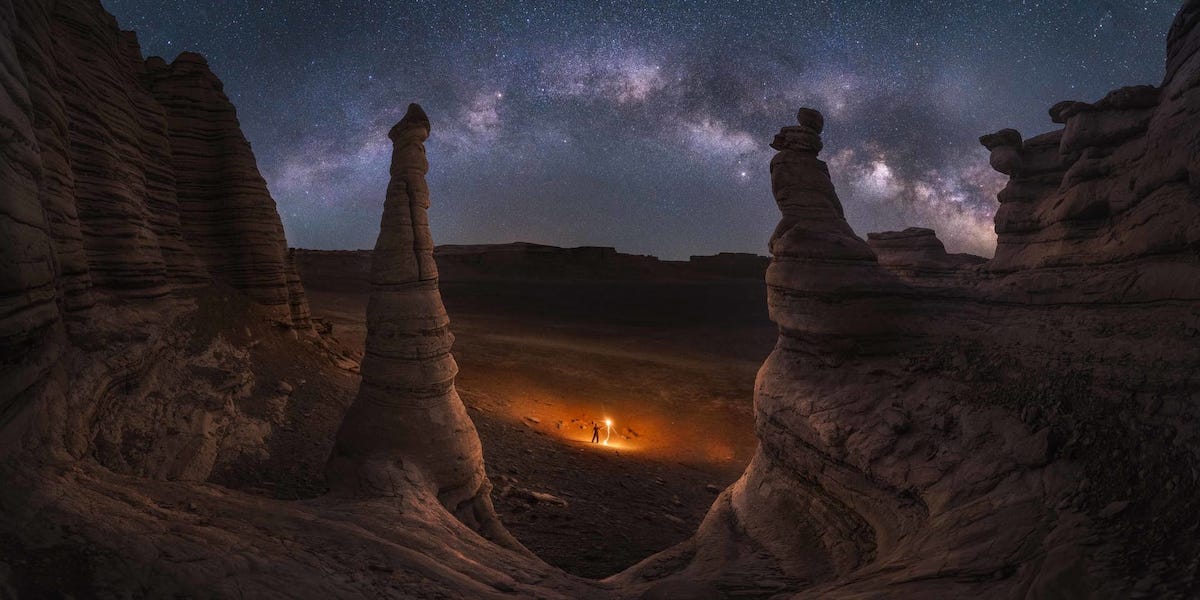
“Lightning the Milky way” by Jinyi He. Location: Xinjiang, China
“This photo was taken in Dahaidao Desert, the no-man’s-land in Xinjiang. Because of the often fierce wind, this area gradually eroded into separate hills that take on the unique shape of a yardang.
I found this location online after lots of research and drove there in a land Cruiser with GPS.”
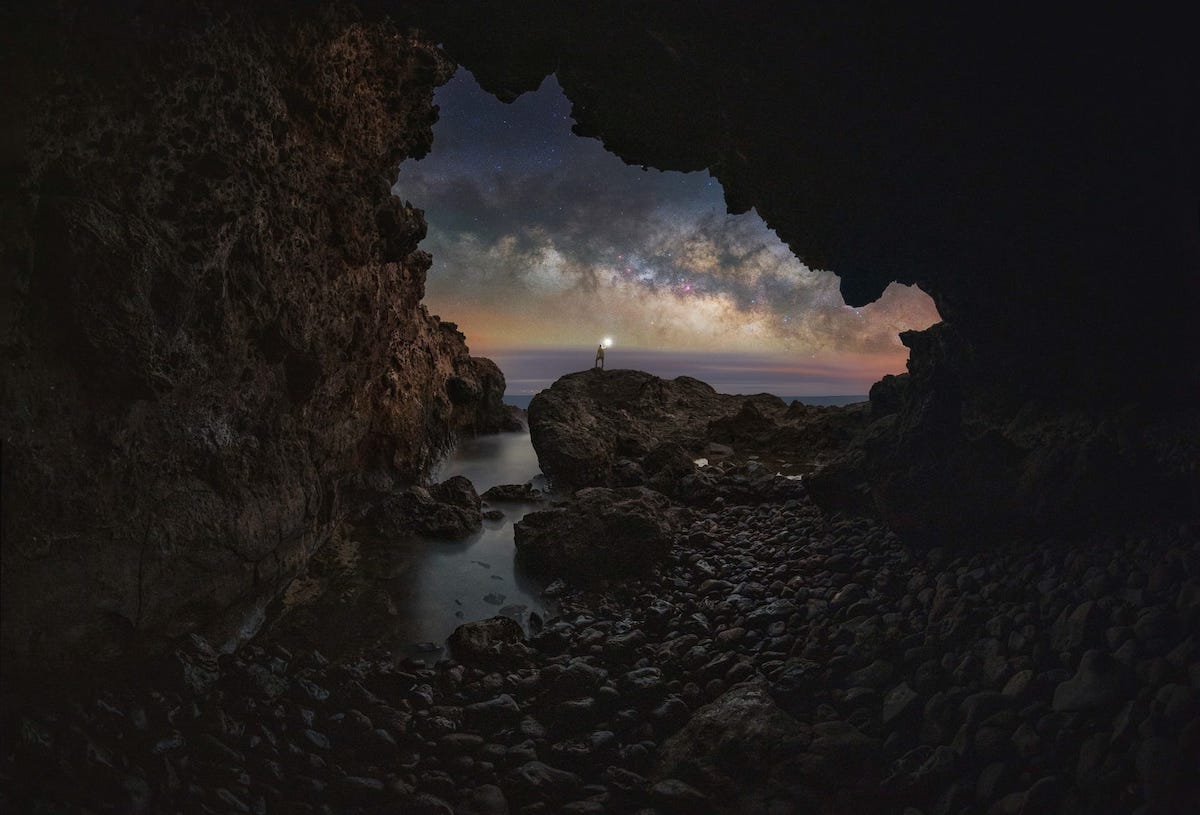
“A balcony to the stars” by Efrén Yanes. Location: Tenerife, Spain
“Tenerife, in the Spanish Canary Islands, has many coastal caves.
I had been planning to take this photo for a long time. The first step was to plan the visibility of the Milky Way and see if it was possible to see the galactic center from inside the cave. I had made two attempts, but both were unsuccessful since, in order to enter the cave, the tide must be low, and the sea’s conditions must be perfect.
Finally, all conditions aligned and I was able to take the photo, adding myself as a human figure to give some sense of scale. I got lucky, since this is one of the few coastal places on Tenerife where light pollution hardly exists.”
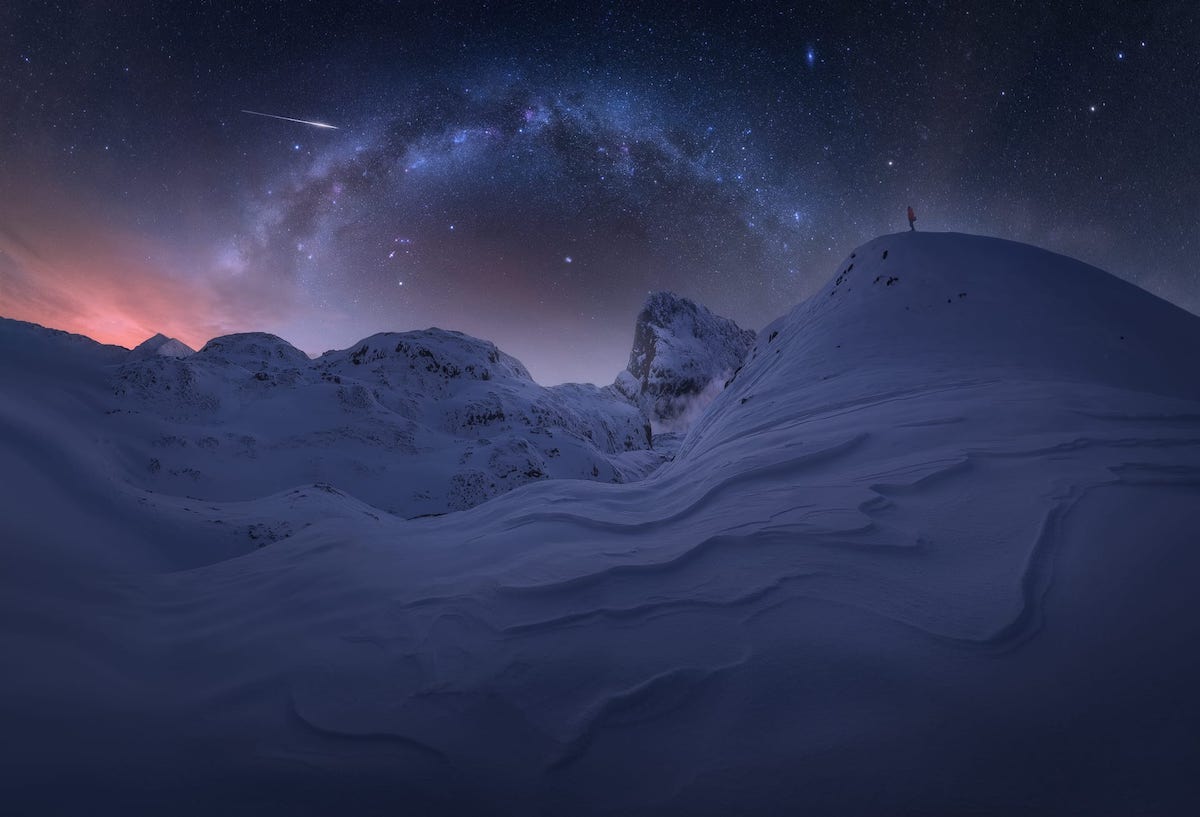
“Winter dreams” by Rubén Vela. Location: Picos de Europa, Spain.
“Winter Milky Way in the mountains of Picos de Europa, in Northern Spain. After a heavy snowfall, I was able to enjoy an incredible night of photography in complete solitude.
The conditions were tricky. To get to the location, I first made tracks without my backpack, as even with snowshoes, I was sinking in knee-deep snow. Once you get there, everything makes sense: the winter Milky Way, the mountains, the snow, the solitude… And as a gift, a shooting star crossed my lens while I was capturing this panoramic view. The shapes of the snow, the mountains, and the winter Milky Way created a magical scene that will be difficult to forget.”
This annual roundup was created by Capture the Atlas, which celebrates travel and photography.
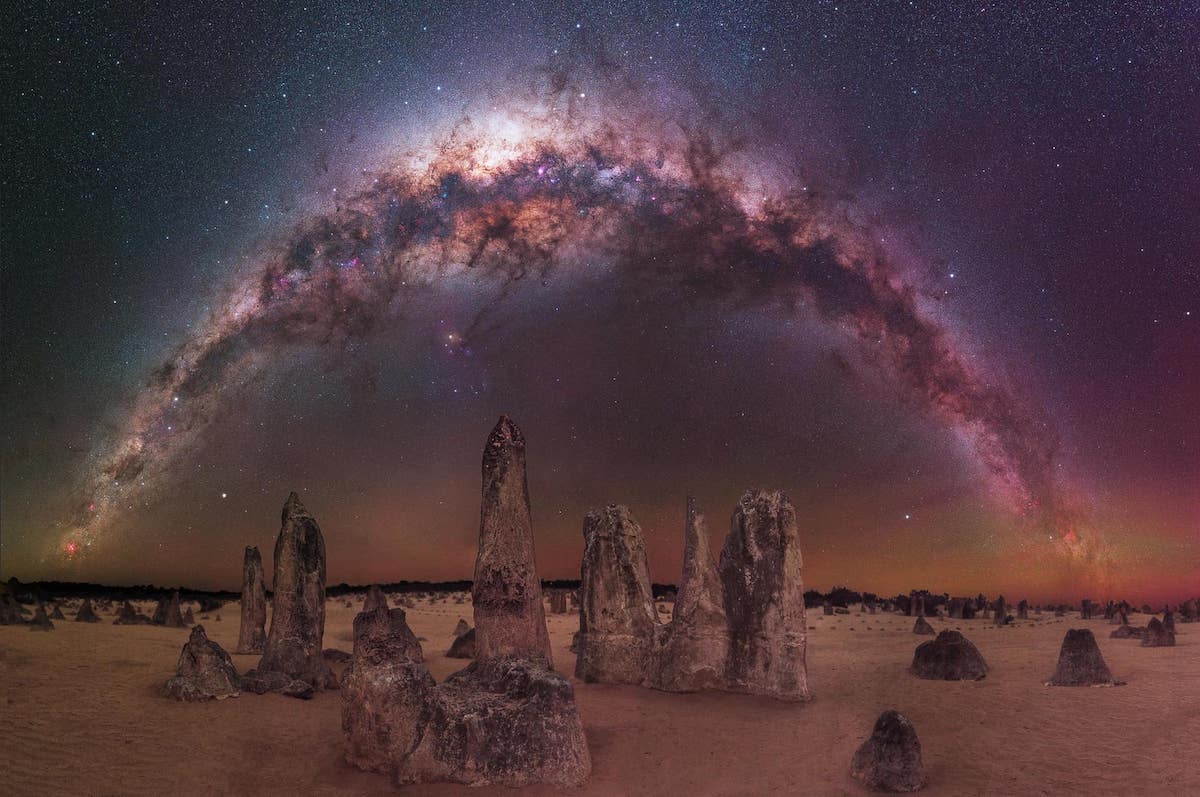
“The Milky Way arching over The Pinnacles Desert” by Trevor Dobson. Location: Nambung National Park, Australia
“This is a 180-degree panorama of the Milky Way as it begins to set towards the western horizon at The Pinnacles Desert, two hours north of Perth in Western Australia.
Using a fast prime lens with a longer focal length allows me to capture the night sky with great detail and vibrancy, but in order to capture the same field of view as a wider-angle lens, it requires so many more shots. For this image, I took 124 individual shots!
The Pinnacles are such an amazing location for astrophotography. The area is littered with thousands of these limestone monoliths, which means that composition possibilities are almost endless and one of the reasons I keep coming back here year after year. It’s such a popular spot that I am almost always in the company of other astrophotographers whenever I visit.”
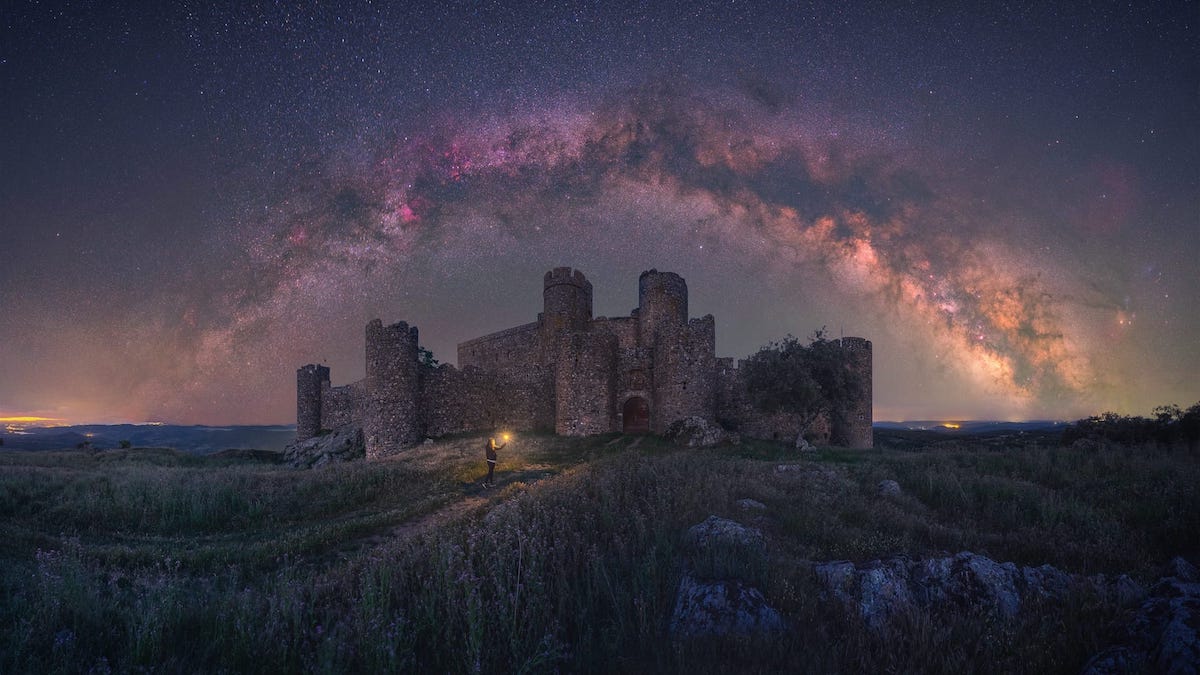
““Path to the past” by Jose Manuel Galvan Rangel. Location: Extremadura, Spain
“‘A natural paradise' – that’s the best way to describe the Spanish region of Extremadura.
Not only are the flora and fauna of this lesser-known region spectacular, but so are the night skies, which are full of millions of stars that seem to light up when night falls and are free of pollution and parasitic lights from large cities. Given the quality of the skies in Extremadura, there are numerous Starlight Reserves that can be enjoyed in these uninhabited lands, with many astrophotographers traveling here as their favorite destination.
I took this photograph in a remote town in the southwest part of this community called Salvatierra de los Barros. In this town that’s practically unheard of by the rest of the world, you’ll find an imposing, privately owned castle that has been standing, under the light of millions of stars, since the fifteenth century.”
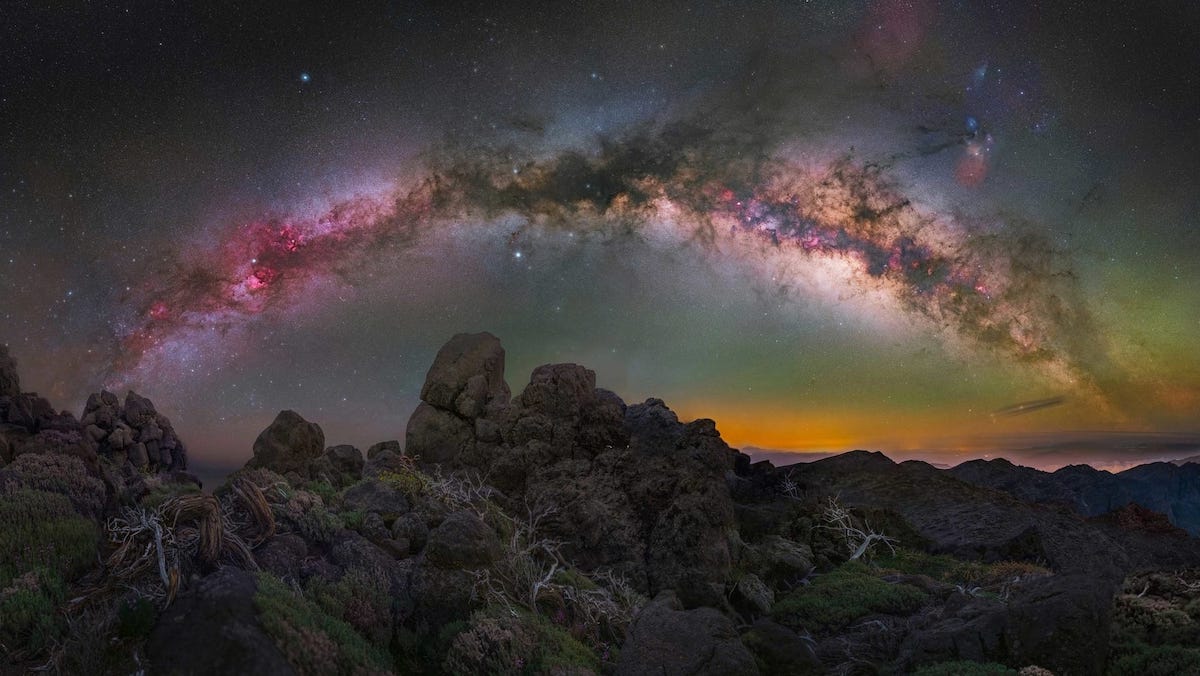
“Milky Way arch in the morning hours of spring” by Egor Goryachev. Location: La Palma, Canary Islands, Spain
“During the spring months, the Milky Way core starts to appear in the southeast part of the early morning sky, so it becomes possible to photograph the whole Milky Way Arch at an almost 180-degree angle from north to south.
I chose Pico de la Cruz, one of the summits on La Palma Island, as my main location to spend the night shooting our galaxy. Around 4 AM, the Milky Way was high enough in the sky that I could start shooting at 50mm and capture a pretty decent arch shape without any distortion of the surrounding stars. Although it was very windy, I was able to photograph some sharp images. All the colors of the Arch, the green airglow emission, the dark sky, and the lights of the neighboring island of Tenerife on the horizon are visible and remind me of this unforgettable experience.
I tried the first night and it was frustrating because the location had zero light pollution, so the photo came out extremely dark, even at ISO 6400. I came back the next day at sunset, and during the blue hour, I took a photo of the foreground. Then, I waited for the Milky Way in the same tripod position and took the photo of the sky.”
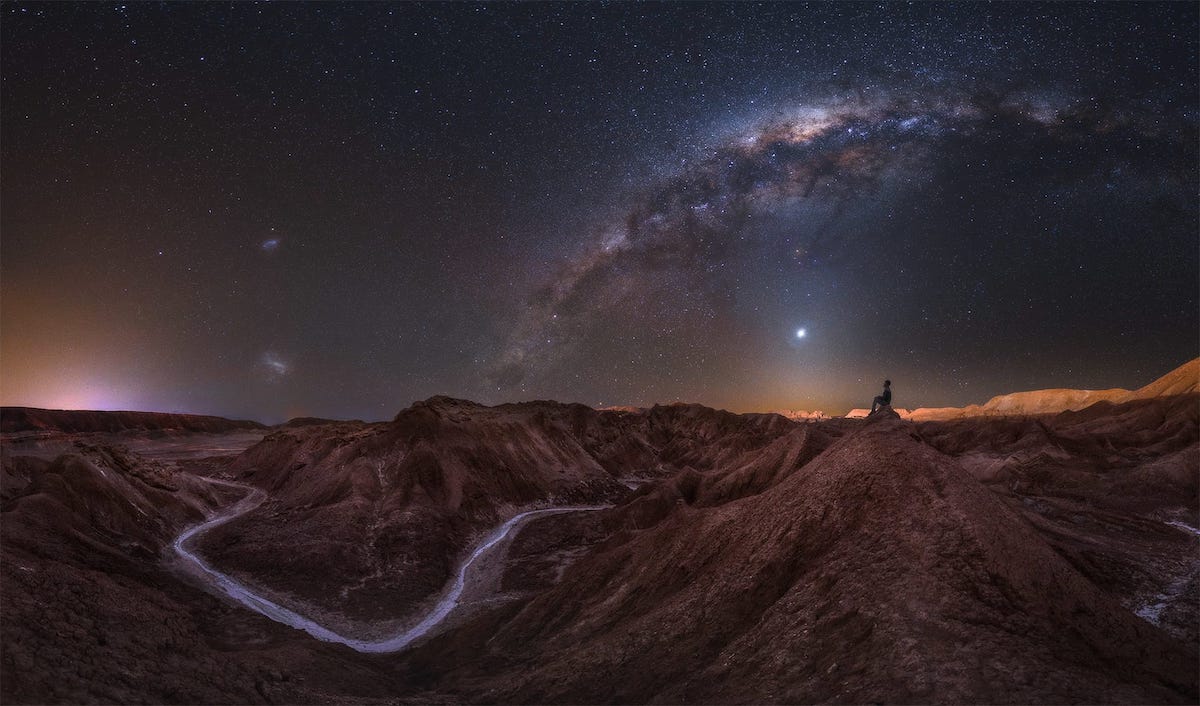
“The salt road” by Alexis Trigo. Location: San Pedro de Atacama, Chile
“When you visit the Atacama Desert, with its arid formations and starry sky, you feel like you’re on another planet.
This place is the millenary salt mountain range where an unbreakable silence reigns, which is ideal for introspection and contemplating the sky. One of my favorite features of this place is the ground’s extensive layer of salt that reflects and enhances the scarce light, which comes mainly from zodiacal light and translates into less noise in the photograph. I discovered this corner one afternoon while I was on a bicycle looking for a unique panoramic view, and I’m so glad I found it!”
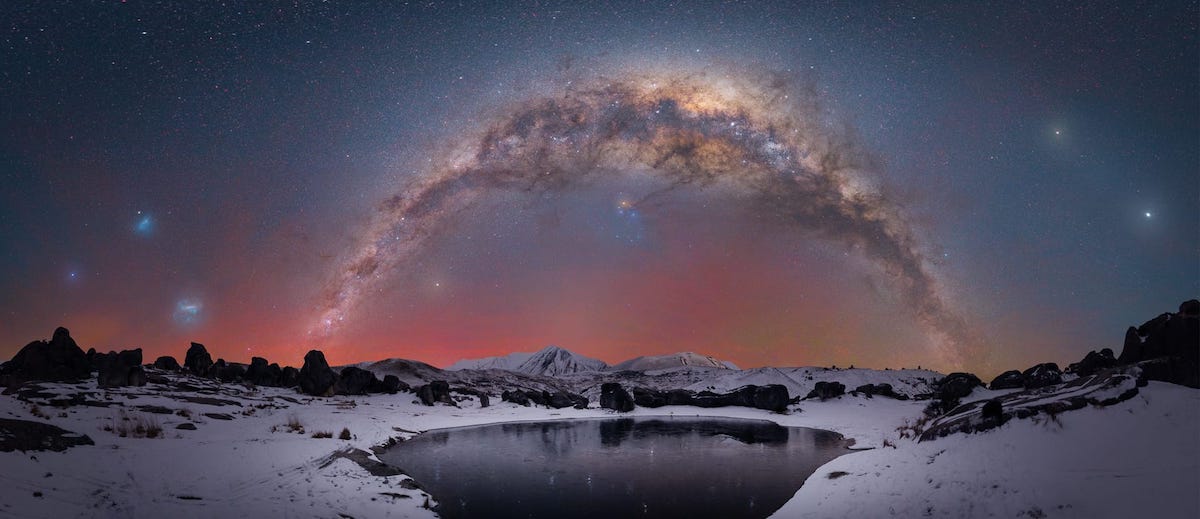
“Solitude” by Nick Faulkner. Location: Castle Hill, New Zealand
“The epitome of an astrophotographer in New Zealand is racing off in the dead of night, mid-winter, after hearing about some snowfall in a close alpine area.
Layering up, grabbing your gear, grabbing a coffee and heading off into the mountains. After driving the back roads and going through many country towns, which have about 10 houses and a pub, and passing thousands of sheep, you arrive at a beautiful, dark, Bortle 1 sky at Castle Hill, which is situated in the heart of North Canterbury, New Zealand.
This Alpine region is one of my favourite places to photograph the stars, as it is to so many other passionate dark sky enthusiasts. The formations of hundreds of giant weathered limestone tors that erupt from mother earth, make for incredible subjects to capture. Add a late winter snow fall to that and it doesn’t get much better.”
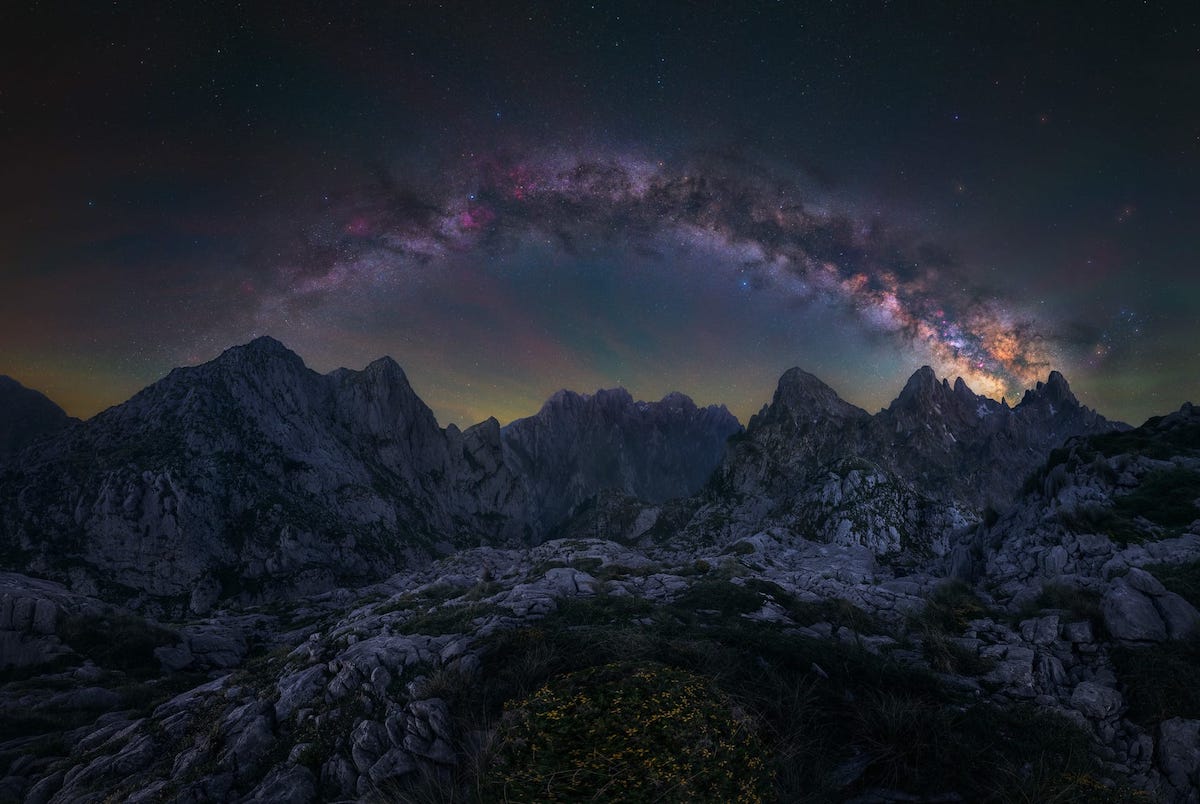
“Secrets of the Night” by Daniel Viñé. Location: Picos de Europa, Spain
“I went to this fantastic place in Picos de Europa in Spain with my friend Felipe Souto. To capture this image, we started hiking with all our camera gear, tripods, trackers, and everything we needed to sleep on the mountain.
After several hours of hiking, we were able to set up camp and began exploring the area in search of locations. There was no time to lose, as it was not long before nightfall. The view was epic; we just had to look for a good, powerful foreground. There was a place I loved, which had a small circle of flowers and was surrounded by stones and mountains. If I pointed my camera southwards, the Milky Way would appear on the north face of the “Picos de Europa.”
I took a panorama at the end of blue hour to get the maximum amount of detail in the foreground. Later at night, I used the tracker and my astro-modified camera to photograph another panorama of seven photographs for the sky.”
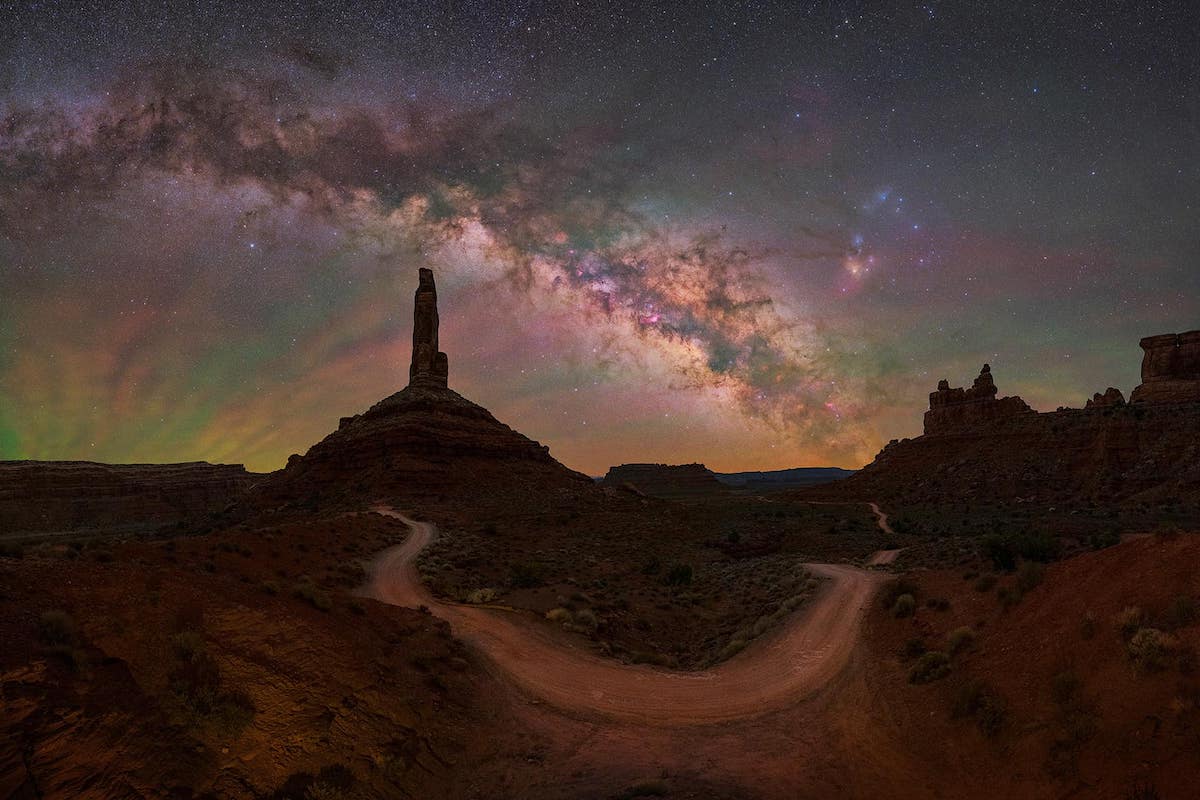
“Sentinel” by Andy Jones. Location: Utah, USA
“Utah is known for its unique desert landscapes, and nature has its own way of drawing your attention.
This sandstone pillar caught mine. It is a large red structure that juts out of the ground and stands watch over the valley, much like a sentinel. It has weathered Mother Nature and battled Father Time. Nevertheless, it’s still standing.
I took a 36-hour getaway to spend a night in this beautiful spot. While the area draws many in for a variety of reasons, I came for the night skies and red rocks. That night did not disappoint. Airglow was on full display with its intense green and orange hues that matched the deep red landscape. The stars were bright and still. The voices and crackle of a small fire from the camp nearby were audible but not loud. All components to an unforgettable memory.
As I shot this panorama, I could not help but think, how many nights, just like this one, has this sandstone sentinel witnessed?”











































































